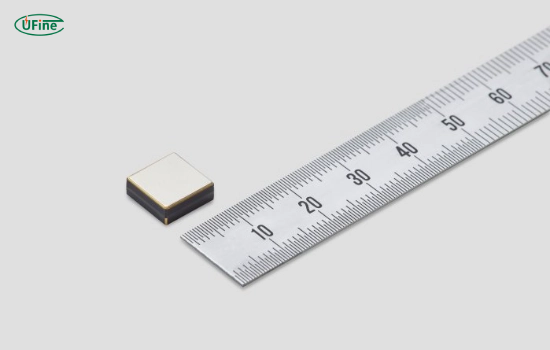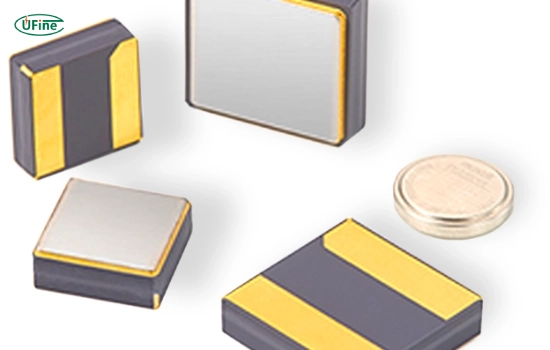In an era of technological advancement, the quest for compact and efficient power sources is more critical than ever. Small batteries are essential in many devices, from everyday gadgets like wristwatches and remote controls to sophisticated medical equipment and smart wearables. This comprehensive guide explores the intricate world of the smallest battery size, detailing their definitions, historical evolution, types, applications, and the latest innovations. By the end of this guide, you will have a thorough understanding of small batteries and their pivotal role in modern technology.
Part 1. What is the smallest battery size?
The smallest commercially available battery is the N-type button cell (IEC code: N) measuring only 5.8mm diameter x 3.1mm height. Commonly used in hearing aids and microelectronics, this tiny power source delivers 10-15mAh capacity at 1.5V. Compare popular miniature battery sizes:
| Battery Type | Dimensions | Voltage | Typical Use |
|---|---|---|---|
| N Cell | 5.8×3.1mm | 1.5V | Hearing aids |
| CR1025 | 10×2.5mm | 3V | Car key fobs |
| SR416SW | 4.8×1.6mm | 1.55V | Medical sensors |
Part 2. How is battery size measured? The 4 key factors
When discussing the smallest battery size, engineers evaluate four critical parameters:
- Diameter & Height: Standardized under IEC codes (e.g., CR2032 = 20mm diameter, 3.2mm height)
- Volume Energy Density: Measured in Wh/cm³ (Lithium-ion: 0.3-0.7 Wh/cm³ vs Silver Oxide: 0.9-1.1 Wh/cm³)
- Minimum Functional Thickness: Current tech limit: ~0.4mm thin-film batteries
- Terminal Configuration: Button vs coin cell designs affecting space efficiency
Part 3. History of small batteries
Evolution of Battery Sizes Over Time
Innovation and miniaturization have marked the evolution of battery technology. The development of the lead-acid battery in the late 19th century laid the groundwork for future advancements. As technology progressed, the need for smaller batteries became increasingly apparent, leading to nickel-cadmium (NiCd) batteries in the mid-20th century and lithium-ion batteries in the 1990s. Each new generation of batteries brought energy density, size, and efficiency improvements.
Key Milestones in Miniaturization
Several key milestones have shaped the landscape of small batteries:
- 1970s: The introduction of lithium batteries marked a significant advancement, offering higher energy densities and longer lifespans than previous technologies.
- 1990s: The development of coin cell batteries provided a compact power source for consumer electronics, enabling the proliferation of portable devices.
- 2000s: Innovations in solid-state battery technology emerged, promising even smaller and safer batteries with enhanced performance characteristics.
Part 4. Types of small batteries
Primary (Non-Rechargeable) Small Batteries
Primary batteries are designed for single-use and are commonly found in everyday electronic devices.
- Alkaline Batteries
- Chemistry: Zinc-Manganese Dioxide
- Voltage: 1.5V
- Capacity: 50–300mAh
- Size: AAA (10.5×44.5mm) to N (12×30.2mm)
Widely used in low-drain devices like remote controls and flashlights. Known for affordability and reliability.
- Lithium Batteries
- Chemistry: Lithium-Manganese Dioxide
- Voltage: 3V
- Capacity: 120–1200mAh
- Size: CR2032 (20×3.2mm) to CR2477 (24.5×7.7mm)
High energy density and long shelf life make them ideal for cameras and medical devices.
Secondary (Rechargeable) Small Batteries
Rechargeable batteries support multiple charge cycles and are more environmentally friendly over time.
- Lithium-Ion Batteries
- Chemistry: LiCoO₂ Graphite
- Voltage: 3.7V
- Capacity: 200–1200mAh
- Size: 10440 (10×44mm) to 18650 (18×65mm)
Common in smartphones, laptops, and EVs. Lightweight and fast-charging with high capacity.
- Nickel-Metal Hydride (NiMH) Batteries
- Chemistry: AB5 Alloy
- Voltage: 1.2V
- Capacity: 600–2500mAh
- Size: AAA (10.5×44.5mm) to D (34.2×61.5mm)
Used in rechargeable household batteries and hybrid vehicles. A good balance of performance and environmental impact.
Part 5. Smallest coin cell batteries
Coin cell batteries are essential for powering small electronic devices. Here’s a closer examination of some of the most popular models:
- LR44: This battery measures 11.6mm in diameter and 5.4mm thick. Due to its reliability and availability, it is commonly used in toys, medical devices, and small electronics.
- CR2032: With a diameter of 20mm and a thickness of 3.2mm, the CR2032 is one of the most widely used coin cells, powering devices such as watches, calculators, and key fobs.
- CR2025: At 2.5 mm, the CR2025 is slightly thinner than the CR2032 and is often used in slimmer devices, such as remote controls and fitness trackers.
Applications and Limitations
While coin cells are versatile, they come with limitations:
- Limited Capacity: Coin cells are unsuitable for high-drain devices, as their energy capacity is relatively low compared to larger batteries.
- Temperature Sensitivity: Extreme temperatures can negatively impact performance, reducing efficiency and lifespan.
Part 6. Smallest button cell batteries
Button cell batteries vary in size and application, each designed for specific uses. Common types include:
- SR44: Silver oxide batteries are often used in watches because they provide stable voltage and last longer than their alkaline counterparts.
- CR1220: With a diameter of 12mm, this battery commonly fits small electronics, medical devices, and keyless entry systems.
Common Uses in Everyday Devices
Button cell batteries are integral to many everyday devices:
- Watches: Providing reliable power in a compact form, button cells are essential for the functionality of both analog and digital watches.
- Hearing Aids: These batteries are crucial for enhancing sound in hearing aids, allowing users to experience clearer audio without bulky power sources.
Part 7. Micro batteries: the next generation
Microbatteries represent the forefront of battery technology, specifically designed for ultra-small devices. They are characterized by their tiny size and high energy density, making them ideal for modern applications that require compact power sources.
Innovations in Solid-State micro batteries
Solid-state micro batteries are a significant advancement in the field, offering several advantages over traditional lithium-ion batteries:
- Higher Energy Density: Solid-state batteries can store more energy in a smaller footprint, making them ideal for miniaturized devices.
- Improved Safety: Solid-state batteries are safer for sensitive applications because they reduce the risk of leakage and combustion.
Applications in Medical Devices and Wearables
People are increasingly using micro batteries in:
- Wearable Technology: Devices such as fitness trackers and smartwatches rely on micro batteries for their compact design and efficient power supply.
- Medical Implants: Microbatteries, which power devices like pacemakers, provide a reliable energy source that minimizes the need for surgical replacements.
Part 8. Smallest rechargeable batteries
Overview of the Smallest Lithium-Ion and NiMH Batteries
Rechargeable batteries are crucial for sustainability and convenience. Notable examples of small rechargeable batteries include:
- 18650 Lithium-ion: Although larger than coin cells, the 18650 battery is still compact and widely used in laptops, electric vehicles, and high-drain devices due to its high capacity and rechargeability.
- AAA NiMH: Commonly used in household electronics, AAA NiMH batteries offer a balance of size and capacity, making them ideal for devices such as digital cameras and remote controls.
Practical Applications in Modern Electronics
Rechargeable batteries are essential in various applications:
- Smartphones: Providing the necessary power to run complex applications and support connectivity features.
- Electric Vehicles: Rechargeable batteries are at the heart of the electric vehicle revolution, enabling longer ranges and faster charging times.
Part 9. Comparing smallest batteries by chemistry, power density, applications
When discussing the smallest battery size, it is essential to understand how different battery chemistries affect their performance, power density, and suitable applications. Here’s a closer look at several types of small batteries:
- Alkaline Batteries are widely used in low-drain devices. Although they have a lower power density than lithium batteries, they are cost-effective for everyday use.
- Lithium Batteries: Lithium batteries, known for their high energy density, are ideal for high-performance applications such as cameras and medical devices.
- Nickel-Cadmium (NiCd) Batteries: Manufacturers use these batteries in power tools and emergency lights because they offer moderate power density. However, they are less common now due to environmental concerns.
- Nickel-Metal Hydride (NiMH) Batteries: NiMH batteries provide a good balance of capacity and environmental impact, making them suitable for hybrid vehicles and rechargeable household devices.
- Lithium-Ion Batteries: With very high power density, lithium-ion batteries are prevalent in smartphones, laptops, and electric vehicles, providing efficient energy storage.
Here’s a simplified comparison table for clarity:
|
Battery Type |
Chemistry |
Power Density |
Common Applications |
|
Alkaline |
Alkaline |
Low |
Toys, remotes |
|
Lithium |
Lithium |
High |
Cameras, watches |
|
NiCd |
Nickel-Cadmium |
Moderate |
Power tools, emergency lights |
|
NiMH |
Nickel-Metal Hydride |
Moderate |
Hybrid cars, rechargeable devices |
|
Lithium-Ion |
Lithium-Ion |
Very High |
Smartphones, laptops, electric vehicles |
Part 10. Choosing the right smallest battery size: 3-Step guide
Follow this decision matrix to select optimal miniature batteries:
Step 1: Determine Size Constraints
- Measure device compartment (L×W×H)
- Allow 0.5mm clearance on each side
Step 2: Calculate Power Needs
- Average current draw (mA)
- Required runtime (hours)
- Min capacity = Current × Runtime × 1.2
Step 3: Select Chemistry
| Application | Recommended Type |
|---|---|
| Continuous low drain | Alkaline |
| High pulse current | Lithium |
| Medical devices | Silver Oxide |
Part 11. Manufacturing processes for smallest batteries
The manufacturing processes for most miniature batteries are specialized to ensure they meet the unique demands of compact design and high performance. These processes include:
- Electrode Preparation: The creation of electrodes for small batteries involves using advanced materials that maximize energy density while minimizing size. Engineers must precisely design the materials for optimal performance in compact formats, making this step critical.
- Cell Assembly: The assembly of small batteries requires meticulous attention to detail. Components are assembled in cleanroom environments to prevent contamination, which is particularly important for micro batteries and coin cells with limited error space.
- Encapsulation: Encapsulation techniques protect small batteries’ internal components from environmental factors. This is especially crucial for wearables and medical device batteries, where exposure to moisture and temperature fluctuations can affect performance.
- Testing and Quality Control: Given the critical applications of small batteries, rigorous testing procedures are implemented to ensure safety and reliability. This includes evaluating the batteries under various conditions to simulate real-world usage and ensure they meet industry standards.
- Packaging: We package small batteries to maintain their integrity and safety during transport and storage. This is particularly important for batteries with high energy densities, where improper handling can lead to safety hazards.
Part 12. FAQs about smallest battery size
What is the smallest battery size available?
The smallest commercially available battery is the N button cell, which measures just 5mm in diameter and is used in devices like hearing aids and small electronics.
How long do small batteries typically last?
The lifespan of small batteries varies widely based on usage. Still, many can last from several months to a few years, depending on the device and battery type.
Can small batteries be recycled?
Yes, many small batteries, especially rechargeable ones, can be recycled. It’s essential to follow local guidelines for battery disposal to minimize environmental impact.
Are there any safety concerns with small batteries?
While generally safe, small batteries can pose risks if damaged or improperly disposed of, leading to leaks or fires. Proper handling and disposal are crucial.
What advancements are being made in small battery technology?
Innovations include the development of solid-state batteries, which promise higher energy densities, improved safety, and longer lifespans, making them suitable for a broader range of applications.
Related Tags:
More Articles

LiPo Battery Discharge Rate Guide & Calculation Tips
Understand LiPo battery discharge rates, C-ratings, and how to calculate max current. Essential guide for RC, drones, and electronics users.
High‑Capacity 3S LiPo Batteries: 5000 mAh vs. 10000 mAh
Compare 3S LiPo 5000mAh vs 10000mAh batteries by weight, power, and use. Find the best fit for your drone, RC car, or boat setup.
Top 5 Applications for Small 3S LiPo Batteries
Small 3S LiPo batteries power drones, RC gear, wearables, and robotics with high energy and low weight. Making them ideal for compact electronics projects.
Building and Charging Your Own 3S LiPo Pack: A Step‑by‑Step Guide
Learn how to build, balance, and charge a 3S LiPo battery pack safely at home with this complete DIY guide for hobbyists and beginners.
How to Choose the Right LiPo Battery Plug Type?
Discover the best LiPo battery plug types, how to choose them, and expert tips for safe usage, soldering, and maintenance.





